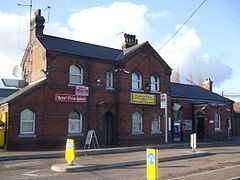OS grid reference TQ592827 Post town SOUTH OCKENDON Dialling code 01708 | Postcode district RM15 | |
 | ||
Taste of aveley south ockendon essex
South Ockendon is a settlement and Church of England parish in the Thurrock borough and unitary district in Essex in the East of England, United Kingdom. Located on the border with Greater London just outside the M25 motorway. The area to the north is North Ockendon.
Contents
- Taste of aveley south ockendon essex
- Map of South Ockendon UK
- Essex enquirer george osborne visit to arisdale place phase 2 arisdale avenue south ockendon
- History
- Notable residents
- Transport
- Education
- References
Map of South Ockendon, UK
Essex enquirer george osborne visit to arisdale place phase 2 arisdale avenue south ockendon
History
South Ockendon is an ancient parish. It was a village before the Norman Conquest, had a priest in 1085. is listed in the Domesday Book as "Wocheduna", conjecturally named after a Saxon chief, Wocca, whose tribe allegedly lived on a hill. The suffix "don" in Old English means a low hill in open country. Until the late 1940s, the village centred on The Village Green, with its Norman Church of St. Nicholas of Myra and adjoining "The Royal Oak" a 14th-century tavern with a 17th-century northern extension. North, South and West Roads all converge on The Green. The railway through Ockendon station was built in 1892 as a through line from Tilbury Dock to the Midlands and further via Upminster and Romford and now is a major commuter route between Southend and Fenchurch Street via Barking.
In 1912, "Mollands Farm" to the south of the original village was acquired for use as a 'rehabilitation' facility for what are now termed 'disadvantaged' or 'educationally challenged' people who were put to useful work on the farm. Over time the farm developed into a major mental hospital (known locally as The Colony) or as South Ockendon Psychiatric Hospital. The hospital closed in 1993 and was demolished in 1998 (This date is disputed as there were already houses on the site as early as 1996) as an indirect result of the devastating "South Ockendon Report" which re-defined the borders of bad management of mental patients and led to a nationwide re-appraisal of mental care in the UK. Redevelopment of the former hospital site followed from early 1997. It had been proposed to convert The Colony into a prison but reason prevailed when it was realised that Thurrock Borough Council had a potential 'nice little earner' by approving the building of a major housing estate comprising 688 high spec. dwellings which would attract a very substantial return in "Council Tax". This estate was built in modules, by various well-respected developers,over a four-year period and is now known as The Brandon Groves Estate. The estate covers about 100acres with extensive lawns, walks and over 3.5 miles of paved access roads. It is furnished by dozens of long established trees but (as of 2015) maintenance is somewhat neglected by Thurrock Borough Council.
South Ockendon village became a location for prefabricated houses (prefabs) accommodating bombed-out residents of East London/West Essex in the very late 40's. Much of the original post war construction was undertaken by former German Prisoners of war. The majority of these were demolished in the late-1960s when a sizeable Greater London Council estate, Leca plan "concrete" construction homes – the Flowers' Estate – was built to replace them, once more with pre-fabricated dwellings, albeit of a superior design.
In the 1970s The Ford Motor Company factory at Aveley housed Ford's Advanced Vehicle Operations which built cars such as the RS1600. The plant was wound down gradually from the late 90's but closed entirely in 2004, when the last 150 jobs were lost. The majority of the 150 accepted transfers to other Ford or ancillery sites around Essex. The 'Aveley' plant was situated along and west of the railway line, adjacent to Ockendon station in the Belhus Ward that part of Ockendon now commonly known as "Belhus" and also used to name a nearby golf club west of the M25.
Notable residents
Thomas Bennett Sturgeon was responsible for all the merino sheep imported into Australia and New Zealand, forming the entire basis of their wool and lamb economy.
Transport
The railway line from Upminster to Grays separates the old village of South Ockendon from Belhus. The line is a spur between Grays Thurrock and Upminster of the line from Fenchurch Street Station to Southend and Shoeburyness.
South Ockendon is served by Transport for London. As of Autumn 2015, 370 runs between Romford and Lakeside via South Road and 347 serves Romford from Ockendon station via Upminster and Harold Wood. Local services connect the village directly with Basildon, Brentwood, Purfleet, Grays and Aveley.
Education
Secondary education is provided by The Ockendon Academy (formally known as The Ockendon School, and before that Lennard's Secondary Modern School).
